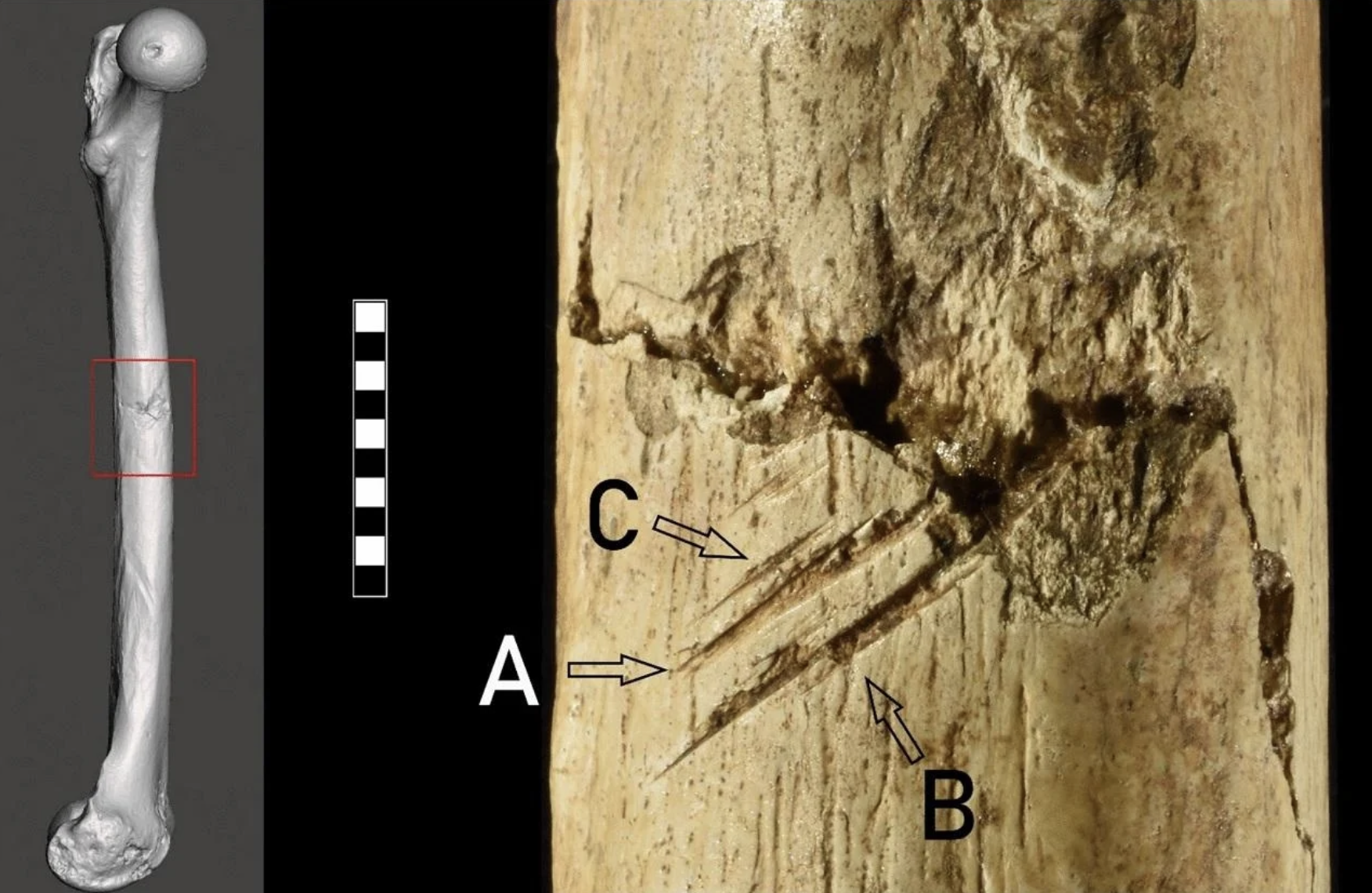New Study Reveals Prehistoric Man Was Killed in a Violent Ambush!
In a remarkable glimpse into humanity’s early history of conflict, archaeologists have revealed new evidence that a young man who lived nearly 17,000 years ago in what is now northern Italy met a violent end. Known as Tagliente 1, the man appears to have been ambushed and killed by flint-tipped weapons, a discovery that sheds light on one of the earliest known instances of intergroup violence among prehistoric hunter-gatherers.
The skeletal remains were originally uncovered back in 1973 at Riparo Tagliente, a rock shelter in the Lessini Mountains of north-eastern Italy. At the time, only the lower limbs and fragments of the upper body were found, likely due to earlier disturbances at the site. The man, believed to have been between 22 and 30 years old at the time of his death, lived during the Late Epigravettian period, shortly after the peak of the last Ice Age.
For decades, the cause of death remained uncertain. But recent technological advances have changed the story. A team led by bioarchaeologist Vitale Sparacello from the University of Cagliari used 3D imaging and scanning electron microscopy to reanalyse the bones. What were once thought to be signs of post-mortem damage or ritual practices turned out to be something far more disturbing: trauma from high-speed flint-tipped projectiles.
The study, published in Scientific Reports, identified five distinct cut marks on Tagliente 1’s bones, four of which matched injuries caused by thrown weapons. One of the wounds was on the front of his thigh, while another was found on the back of his lower leg. This pattern suggests he may have been fleeing or surrounded by multiple attackers during the fatal encounter.
Unlike other ancient cases where stone points are still embedded in bone, Tagliente 1’s injuries were recognised solely through analysis of bone trauma. The precise, steep cuts and microscopic scraping suggest deliberate attacks with weapons, not damage from tools or animal bites.
So what drove this deadly encounter? Researchers believe the violence may have stemmed from increasing competition for resources as the glaciers retreated and new lands opened up in the Alpine region. In such mobile societies, projectile weapons weren’t typically used for personal feuds but for raids or ambushes, calculated acts of aggression between groups.
Yet even in death, Tagliente 1 was treated with care. He was buried on his back in a shallow grave, arms at his sides. His legs were covered with large stones, including one carved with images of a lion and an aurochs horn. Nearby were ochre-stained pebbles and a pierced shell, possibly symbolic objects or offerings placed during a burial rite.
This contrast between the brutality of his death and the reverence of his burial raises compelling questions. Was he remembered as a hero? Was the burial a communal response to grief and trauma? Some researchers suggest such ceremonies may have helped early societies cope with the upheaval caused by violent deaths.
We may never know who attacked Tagliente 1 or what led to the confrontation. But thanks to these modern techniques and fresh insights, his remains offer a rare and haunting glimpse into the dangers and complexities of life in the late Stone Age.

